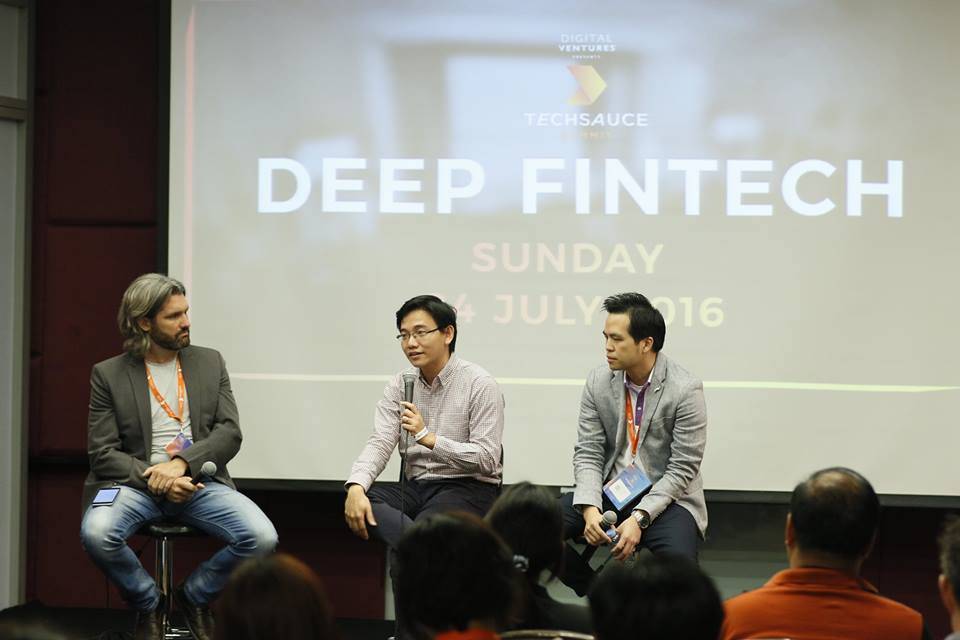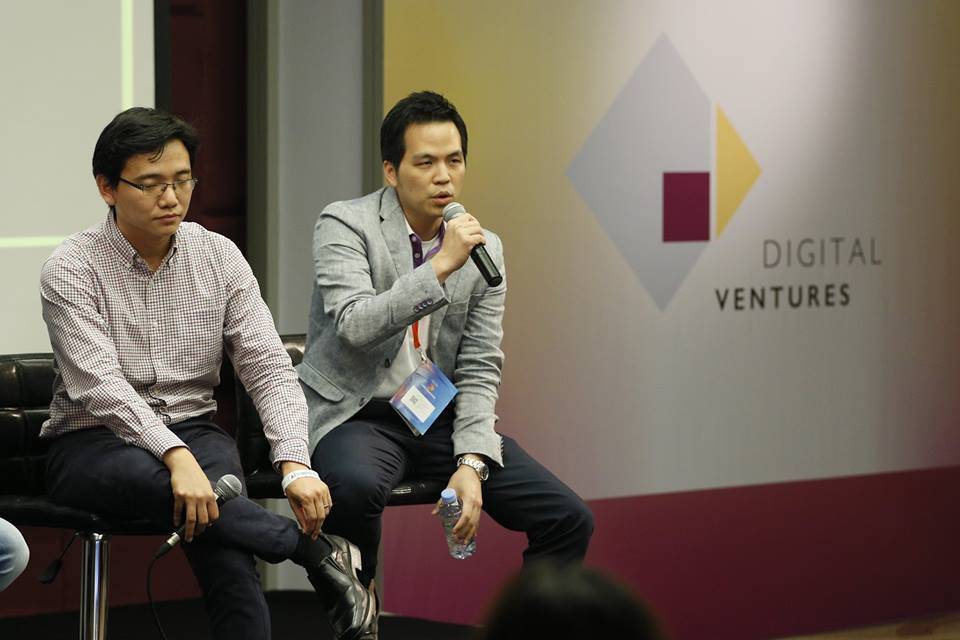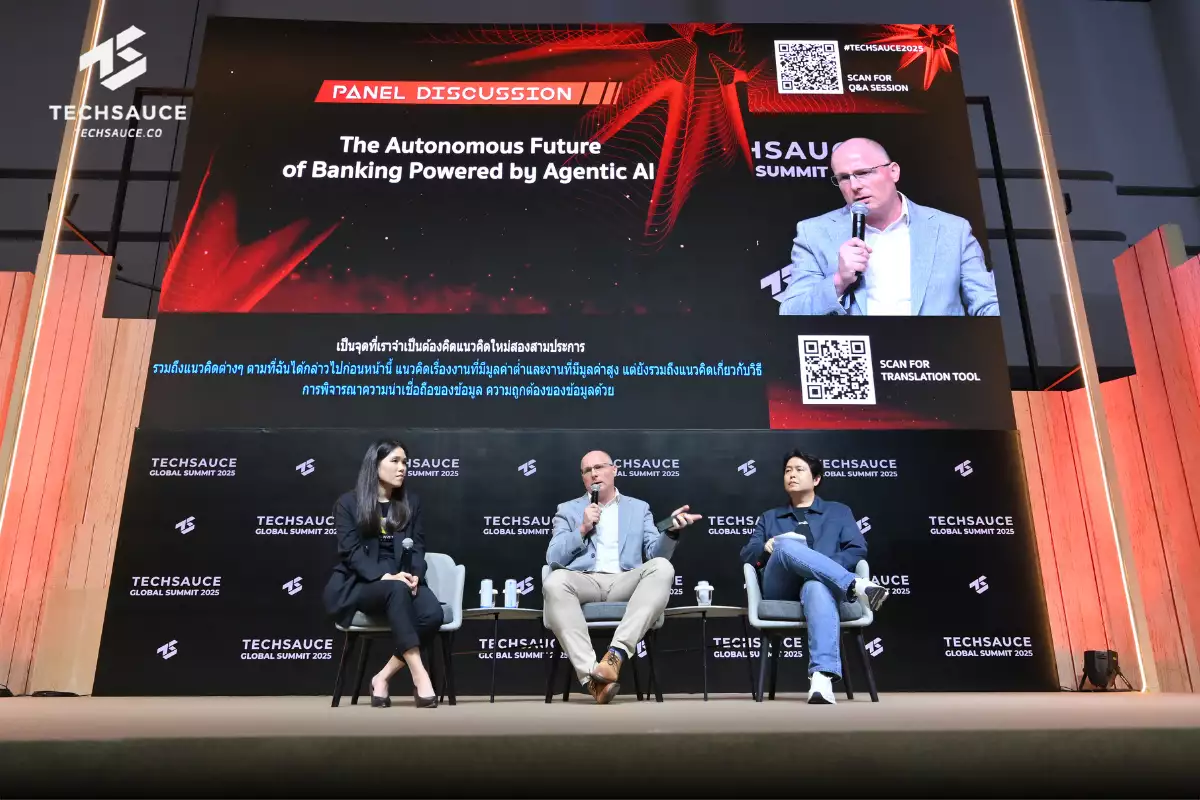The Challenges and Risks of Blockchain Technology
Blockchain has been a very hot topic within the FinTech circle recently, as it has the potential to disrupt the financial services industry. Techsauce is proud to have Chris Skinner, one of the most influential figure in the blockchain and FinTech industry globally, to give a keynote on the blockchain revolution. This panel discussion at the FinTech stage further explores the use cases and challenges of blockchain.
Panel Discussion with:
- Suvicha Sudchai (Tom) - Head of Digital Products, Digital Ventures
- Alan Lim - Lead Software Architect, IBM Singapore
- Moderated by Steve Haley - General Manager - MC Egypt LLC
In relation to Chris Skinner’s keynote about the blockchain earlier, where we stand now and where we’re going, any thoughts on that?
Alan:
- Chris Skinner’s comment on internet of value being the key enabler to realise the potential of internet of things – the whole problem of trust is still operating in the old way.
- Fundamentally, we need to rethink how our business operate and solve existing problems.
Use cases of what internet of value and internet of things mean?
Alan:
- For example, for the fridge, if the milk is running low, triggers a shipment from the grocery store. In order to facilitate that, we need to establish a sense of trust between the different parties to ensure it’s the real person requesting the goods.
- Perhaps blockchain could be used to solve some of these problems in the internet of things use cases.
Tom:
- One of the most powerful things that the blockchain can solve: the problem around financial inclusion, how do we include those people who are unbanked and need some sort of financial services?
- The fundamental aspect of this change is that we need to be able to identify these people – the digital identity of everyone in the world, to identify who they are and what kind of services they need and how they transact on the blockchain.
Steve:
- As part of the R3 consortium, banks are coming together to build their own blockchain and figuring how they can use this technology.
Regulations: where do we stand now in terms of what the central banks and regulators are thinking about blockchain?
Alan:
- Regulation support from the government is very important.
- In Singapore: collaboration between IBM and various government organisations, specifically the Monetary Authority of Singapore. There’s a lot of support for the development and application of blockchain, especially around trade and finance, areas which have a lot of potential.
Tom:
- Discussions on regulatory sandbox, models in the United Kingdom and Singapore. Thailand is starting to look at that as a model to see how Thailand can adopt that, to launch these blockchain technologies in the sandbox.
- Bank of Thailand and Securities and Exchange Commission are interested and they’re pushing forward the blockchain technology, trying to understand the technology and how it can do for the country as a whole.
Steve:
- In Dubai and Abu Dhabi – a commission that brought in entrepreneurs, startups, VCs and government officials, being led by the Emir of Dubai, to implement blockchain.
- Abu Dhabi is also talking about a regulatory sandbox.
What is a regulatory sandbox?
Tom:
- Physical sandbox – a place where kids can play and fall safely.
- Regulatory sandbox - sub-environment for people to implement a limited subset of solutions and financial services within the sandbox, so that the impact or losses is limited.
The debate of open blockchain vs closed blockchain – some Bitcoin enthusiasts say that there should only be one single Bitcoin blockchain and the closed blockchain subverts the entire purpose of the blockchain. On the other hand, banks are creating closed blockchains through other initiatives.
Alan:
- They’re two different school of thoughts, not conflicting but just two different starting points.
- There are real concerns around identity and security.
- To make it real, those are the qualities that need to have in place: having the identity of who get and who are the parties involved in the transaction, auditability.
- Collaboration with Hyperledger: how to adopt private permission networks to solve some of the problems in existing businesses.
Tom:
- We definitely need both, and it depends on the application of the blockchain.
- For financial services and digitisation of identity, maybe it’s better to use a private blockchain. For example, Money transfers and remittance, maybe a private blockchain with different banks on the network.
In addition to the digitisation of identity, what are the other use cases for the banks?
Tom:
- Remittance and cross border transfers.
- Trade finance, where a lot of parties are involved.
- Escrow services – In Thailand, a lot of discussion around how to perform escrow services better. Ethereum allows out of the box features for doing smart contracts, which forms the foundation for doing escrow services.
- Peer to peer lending – if digitise assets (eg title deeds) on blockchain, secured lending would be possible.
What are some of the enterprise solutions that you see opportunities?
Alan:
- Blockchain has the potential beyond just a given industry.
- Ultimately, blockchain is to reduce friction in existing use cases, such as improving time to settle disputes, removing physical documents and being smarter in terms of paying people.
- Settling and reconciling between different legal entities within a group of organisation.
Tom:
- Technology side of a bank, core banking system, process ledgers, transactions are the input, whereas output are the reports to government.
- Implementation of these core banking systems depends a lot on configuring a lot of these reports and customise them to fit regulatory environment in each country. If we can put blockchain in a core banking system, so that reporting can happen instantaneously so that customisation or implementation is not needed.
Steve: On the Ethereum blockchain and smart contracts, the DAO raised $150m (largest crowdfunding campaign in history), only to be hacked about two months later. However, it wasn’t the blockchain technology that was hacked, but the contract wasn’t strong enough. For smart contracts, it’s really about having a good lawyer.
How far away are we from the consumer use case?
Alan:
- It is anyone’s guess.
- Wide range of possibilities: some more advanced teams could probably take production in a regulatory sandbox next year, to perhaps year 2020 for wide scale implementation.
Tom:
- A few use cases that are widespread and popular: cross border transfers and remittance, Bitcoin
- Asset digitisation is where the power of blockchain can have real impact
Steve’s biggest takeaway from Chris Skinner’s keynote is that blockchain is now at a stage where it’s like internet before the browser days.
ลงทะเบียนเข้าสู่ระบบ เพื่ออ่านบทความฟรีไม่จำกัด








